Aztec Secret Indian Healing Clay makes a great mask, but it’s alkaline so you need to mix it with apple cider vinegar to bring the clay to a skin-friendly pH. But then you slap it on your face and try to relax, but you can’t because all you can smell is vinegar. What can you do?
I was stuck with that conundrum, when I realised that there’s a safe, non-stinky acid you can buy at the supermarket: citric acid! Citric acid is used for baking, jams and making bath bombs. It comes as sugar-like crystals, and only costs a few dollars. It smells extremely mild, so you can do your mask and feel pampered and not like you’ve stuck your head into sauerkraut. It’s a win all round!
(Technically, citric acid is also an alpha and beta hydroxy acid and has nice effects on skin, but it doesn’t seem to be as effective as glycolic or lactic acids, and there’s only a tiny chance that it’ll do anything with the concentration, pH and application time we’re using.)
Recipe
I picked myself up a shaker of citric acid, did some calculations (skip to the bottom of the post for those) and played around with proportions. A ratio of 1:8 acid to clay worked well – that is, 1/8 tsp acid for 1 tsp of clay. I added enough water to get the consistency I wanted (about 1 tsp), and the final pH ended up as ~5. This recipe gives a pretty thin mask – double it if you prefer a thick layer.
I also tried 1:4 acid to clay (1/4 tsp acid mixed with 1 tsp clay), which gave a pH of 4-5. While it was OK going on, the mask stung a little by the time it was dry, though it didn’t leave the redness I usually get with 1:1 clay/ACV. My skin also looked particularly nice afterwards. If your skin is pretty resilient to acids (e.g. you’ve used chemical exfoliants a lot), you could perhaps cautiously try this stronger version out.
If you decide to try these recipes, please be cautious the first time you do it – either test the pH with strips, or patch test it behind your ear, or at least be ready to jump into the shower and wash it off your face immediately if you feel an unusual amount of irritation. It’s quite likely that our measuring methods and our ingredients are a bit different (different degrees of packed down, levelling scoops etc).
Photos
Here’s the actual mixing – I prefer to mix the acid and clay while they’re dry so the mask fizzes more evenly.
When you add water, there’s the familiar carbonate + acid sizzle. It actually leaves you with a mask that’s slightly fluffy with a mousse-like texture, which makes applying it a breeze.
The final mixture actually smells mostly like the clay – it’s very slightly sulfury, which I hadn’t noticed before because the vinegar smell drowned it out. Once it’s on though, you can barely notice the smell, so I regard it as a success!
Calculations
Here’s the maths! This is only really for the chem nerds: you can roughly convert the amount of acetic acid in vinegar to citric acid.
1 tsp clay : 1 tsp vinegar
Assuming 5% acidity and 1 mL = 1 g of vinegar, 1 tsp = 5 mL = 5 g.
5% of 5 g = 0.25 g
molar mass of acetic vinegar = 60.05 g
molar mass of citric acid (anhydrous) = 192.12 g
Equivalent mass of citric acid = 0.8 g
Assuming 1 tsp citric acid = 3.6 g, then equivalent volume of citric acid = 1/4 – 1/5 tsp.
This only gives you a ballpark figure for a number of reasons:
- Citric acid is triprotic, which means it reacts with three times as much base as acetic acid, but the composition of bentonite clay isn’t that well established so it’s hard to tell how much will react, and that’s important because it’s the amount of acid left over that influences the pH.
- Citric acid is also a tad stronger than acetic so less of it will cause the same pH change.
- Different brands of ACV also have different percentages of acidity (and acids apart from acetic), and citric acid can be anhydrous or hydrated (usually the package won’t say which one you have).
- Measuring solids by volume is never reliable because of variability in how tightly it’s packed.
Luckily though, pH is a log scale, which means going down a pH point requires a 10-fold difference in acidity, and healthy skin can tolerate a pretty wide range of pH in a wash-off product (anywhere from 4-7 is great, even 3-9 is probably not that problematic for most people if they only leave it on for 15-45 minutes, and only weekly or so). However, keep in mind that as the mask dries, the acidity becomes more concentrated, so having a mask that’s slightly higher pH than you’re aiming for is wise.
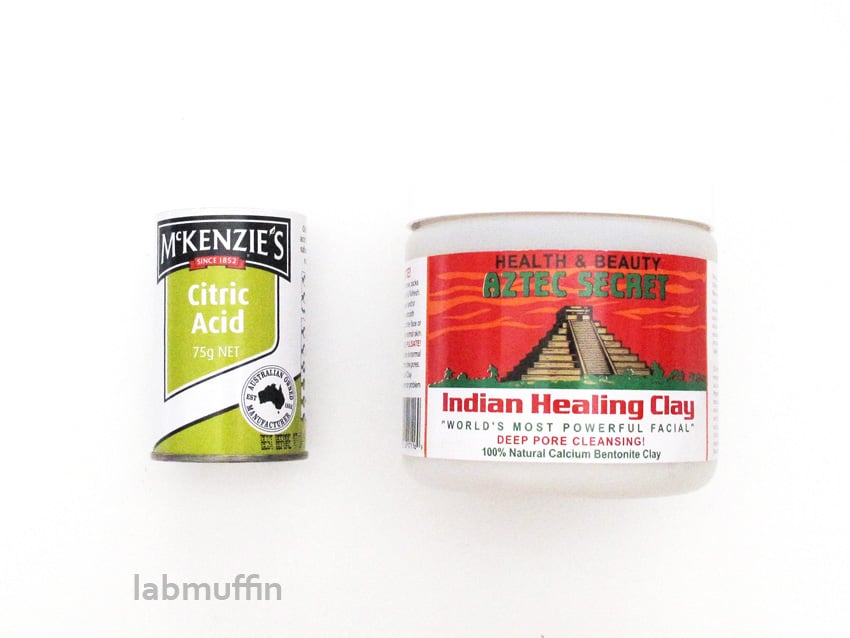
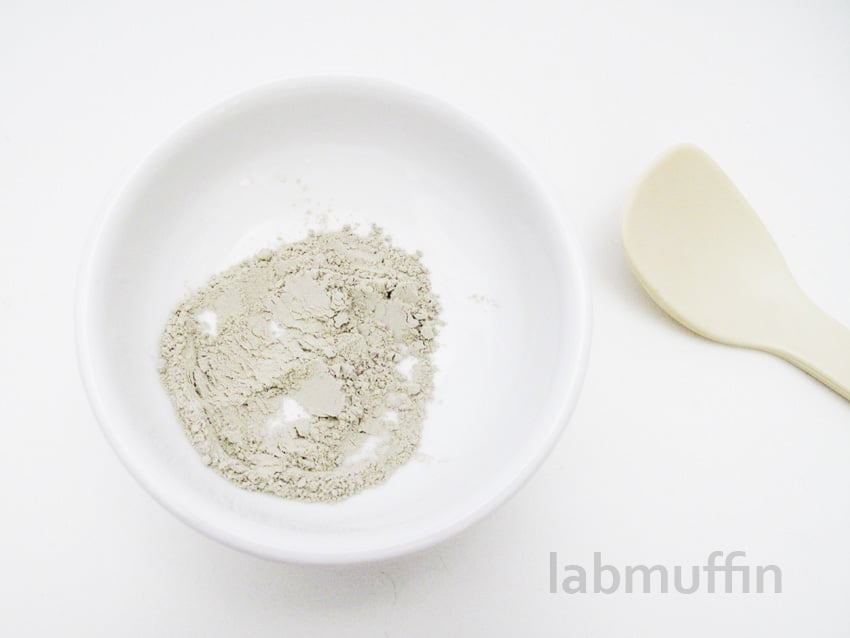
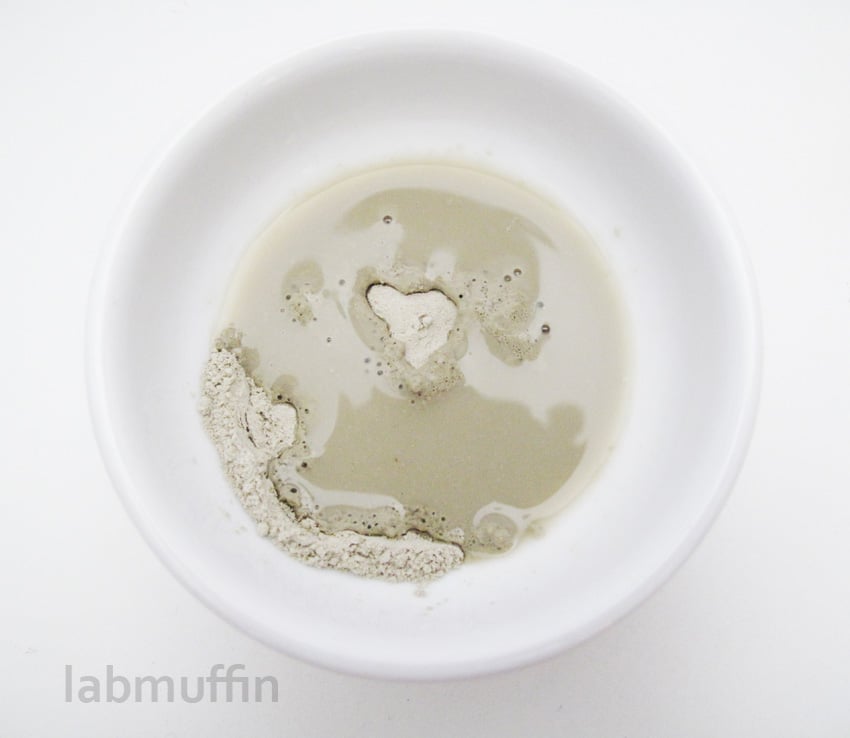
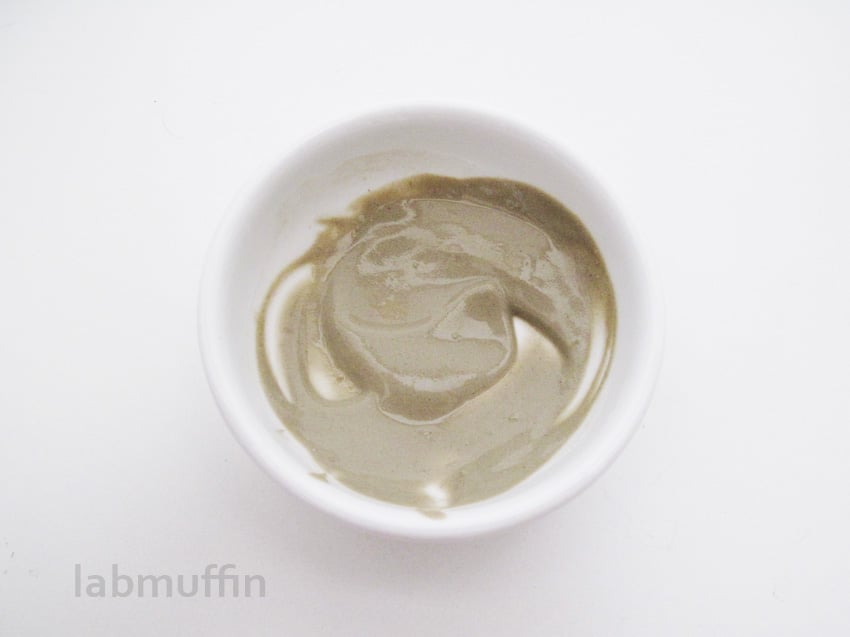



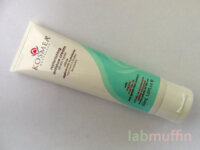
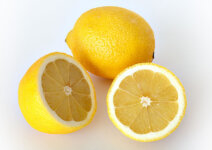

What a great post! I’ve never user an aztec clay mask for this very reason but might soon 🙂 Where do you get your clay?
Wing me a dream
I bought mine from iHerb or Vitacost, I can’t remember anymore! I did see it in a health food shop here in Australia as well, but it was about twice the price.
That’s a neat idea! and I was going to pick up some citric acid anyway for other purpose.
I originally bought this just to lick as a snack 😛
Great post! I am a biology major, and I LOVE that you explain the chemistry behind all of this stuff! Big up for bridging the gap between skincare and science 🙂 I tried to find citric acid at my local grocery, but they didn’t carry it. Could you substitute the juice of a fresh lemon instead?
Thanks! Lemon juice could work but there’s the risk of phototoxicity (I did a post on lemon juice here) but since it’s a mask it should be OK if you follow up with a thorough cleanser!
Interesting post…Come to think of it, I have used lemon juice/water as a toner before and it was pretty irritating to my skin. I have a bit of PIE, and my skin was even more red after using the lemon juice, I guess because of the citric acid or the ascorbic acid. On second thought, I’ll steer clear of it. ACV is easy enough to obtain anyway! Thanks for getting back to me 🙂
Dear Michelle,
I made your DIY Vitamin C Serum today, and am very pleased so far. Since I have it on hand, can ascorbic acid be used to mix a clay mask? What percentages/dilutions would work?
Sincerely, Louise
You probably can, I would try the same proportions as the citric acid to begin with or maybe a little less.
Really helpful post!
Do you reckon using other type of AHA to mix with bentonite clay safe? Like a glycolic acid like Pixi glow tonic?
You could, but I think it would be a bit of a waste of product and pricey, but if that isn’t an issue for you then go for it!